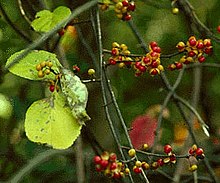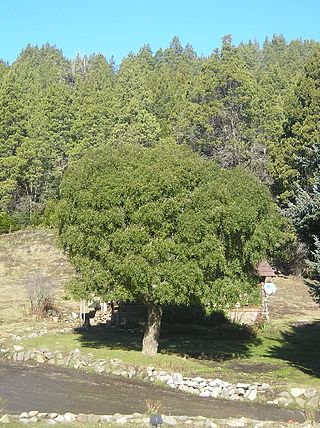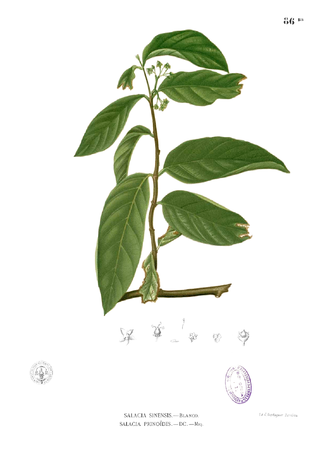| Celastraceae | |
|---|---|
 | |
| Oriental staff vine (Celastrus orbiculatus) | |
| Scientific classification | |
| Kingdom: | Plantae |
| Clade: | Tracheophytes |
| Clade: | Angiosperms |
| Clade: | Eudicots |
| Clade: | Rosids |
| Order: | Celastrales |
| Family: | Celastraceae R.Br. [1] |
| Subfamilies [2] | |
| Synonyms [3] | |
| |
The Celastraceae (staff-vine or bittersweet) are a family of 98 genera [3] and 1,350 species [4] of herbs, vines, shrubs and small trees, belonging to the order Celastrales. The great majority of the genera are tropical, with only Celastrus (the staff vines), Euonymus (the spindles) and Maytenus widespread in temperate climates, and Parnassia (bog-stars) found in alpine and arctic climates.
Of the 97 currently recognized genera of the family Celastraceae, 19 are native to Madagascar and these include at least 57 currently recognized species. Six of these 19 genera ( Brexiella , Evonymopsis , Hartogiopsis , Polycardia , Ptelidium , and Salvadoropsis ) are endemic to Madagascar. [5] The genera Celastrus, Euonymus, Maytenus, Salacia, and Tripterygium are a few better-known genera. These genera each have distinctive traits and functions of their own. [6]







